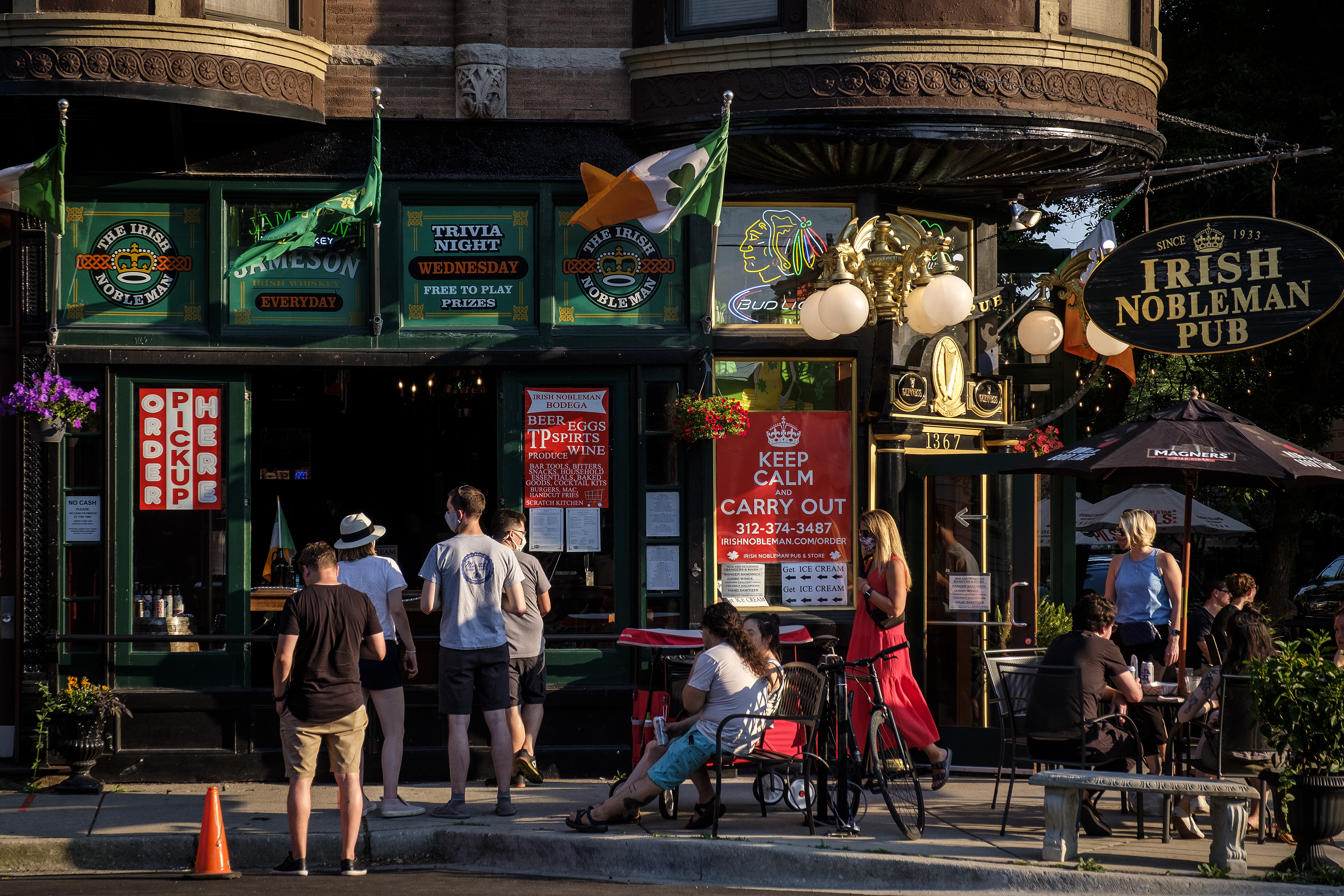Phase four in Illinois begins Friday and it will come with plenty of changes.
The state has been in phase three of its plan since May 29.
Phase four of the "Restore Illinois" plan allows for the reopening or expansion of several industries, including indoor dining at restaurants, health and fitness, movies and theaters, museums and zoos and more. This next phase also increases the size of gatherings that are allowed from 10 people to a maximum of 50 people.
Here's a look at the changes and restrictions:
How many people are allowed at gatherings?
All gatherings of 50 people or fewer are allowed, but that limit is subject to change based on the latest data and guidance. In Chicago, gatherings of up to 100 people will be allowed in outdoor spaces.
Which businesses are open and what are the restrictions?
- Meetings and events: Venues and meeting spaces can resume with the lesser of up to 50 people OR 50% of overall room capacity. Multiple groups are permitted given facilities have space to appropriately social distance and can limit interaction between groups. This includes activities such as conferences and weddings.
- Indoor and Outdoor recreation: Revised guidelines to allow select indoor recreation facilities (e.g., bowling alleys, skating rinks), as well as clubhouses to reopen. Indoor recreation to operate at lesser of 50 customers OR 50% of facility capacity with outdoor recreation allowing group sizes of up to 50, and permitting multiple groups given facilities have space to appropriately social distance and can limit interaction between groups; concessions permitted with restrictions.
- Indoor Dining: Indoor dining can reopen with groups of 10 or less, with tables spaced 6-feet apart in seated areas and with standing areas at no more than 25% of capacity.
- Museums: Can reopen with no more than 25% occupancy, and with interactive exhibits and rides closed; guided tours should be limited to 50 people or fewer per group; museums should have a plan to limit congregation via advance ticket sales and timed ticketing; concessions permitted with restrictions.
- Zoos: Can reopen with no more than 25% occupancy, and with interactive exhibits, indoor exhibits, and rides closed; guided tours should be limited to 50 people or fewer per group; zoos should have a plan to limit congregation via advance ticket sales and timed ticketing; concessions permitted with restrictions.
- Cinema and Theatre: Indoor seated theaters, cinemas, and performing arts centers to allow admission of the lesser of up to 50 guests OR 50% of overall theater or performance space capacity (applies to each screening room); outdoor capacity limited to 20% of overall theater or performance space capacity; concessions permitted with restrictions.
- Outdoor seated spectator events: Outdoor spectator sports can resume with no more than 20% of seating capacity; concessions permitted with restrictions.
- Film production: Allow no more than 50% of sound stage or filming location capacity; crowd scenes should be limited to 50 people or fewer.
- Youth and Recreational Sports: Revised guidelines allow competitive gameplay and tournaments; youth and recreational sports venues can operate at 50% of facility capacity, 20% seating capacity for spectators, and group sizes up to 50 with multiple groups permitted during practice and competitive games given venues have space to appropriately social distance and can limit interaction between groups; concessions permitted with restrictions.
- Health and fitness centers: Revised guidelines allow gyms to open at 50% capacity and allow group fitness classes of up to 50 people with new safety guidelines for indoors, with multiple groups permitted given facilities have space to appropriately social distance and can limit interaction between groups.
- Day camps: Water-based activities permitted in accordance with IDPH guidelines; no more than 50% of facility capacity with group size of no more than 15 participants in a group, unless participants changing weekly.
Retail, service counters, offices, personal care (including salons, barber, nail salons), manufacturing and other industries allowed to reopen in Phase 3 will continue to operate at a reduced capacity.
What about in Chicago?
Here's a look at what will open for the first time at the beginning of phase four in Chicago:
- Indoor seating in bars and restaurants
- Museums and zoos
- Performance venues
- Summer camps / youth activities
- Gatherings of up to 50 people allowed indoors and up to 100 outdoors
Phase four will also include adjustments to other industries that have previously reopened. Residents will still be urged to social distance and wear face coverings.
If progress continues to be made, and the city reaches fewer than 100 new cases per day, capacity restrictions will be loosened further during phase four, health officials said.
Do I still need to wear a face covering?
During Phase 4, common public health standards remain in effect, according to the governor's office. That includes the use of face coverings and social distancing.
Can I return to work?
"All industries should continue to conduct regular cleanings, employee health screenings upon entry and mid-shift, and allow employees who can continue working from home to do so," the guidance states.
What will it take to get to the next phase?
A vaccine, effective and widely available treatment, or the elimination of new cases over a sustained period of time through herd immunity or other factors is required to move to phase five.
What could cause us to move back?
According to the Illinois Department of Public Health, officials will closely monitor data and receive feedback from local health departments and regional councils. A recommendation to move back to the previous phase could be made based on the following factors:
- Sustained rise in positivity rate
- Sustained increase in hospital admissions for COVID-19 like illness
- Reduction in hospital capacity threatening surge capabilities
- Significant outbreak in the region that threatens the health of the region



